From the original wild species roses came the first hybrids. Some occurred naturally with cross pollination performed by birds and bees, but the Chinese and later many Europeans started to create cultivars to combine specific desired attributes into one plant.
The Chinese in particular created a large number with Rosa chinensis being the result of many prior cultivars being crossed.
Up until 1867 a burgeoning group of hybrid roses (Old Garden Roses) were becoming increasingly popular across the gardens of European merchants and noblemen.
Gardens were a showcase, a demonstration of personal wealth and plantsmen pandered to the whims of the wealthy by importing exotics from the far east or creating ever new fabulous plants for the customers to impress their contemporaries with.
Old Garden Roses were becoming increasingly easy to cultivate and maintain. Careful breeding ensured many new hybrids offered reliable repeat flowering and larger, more fragrant double blooms.
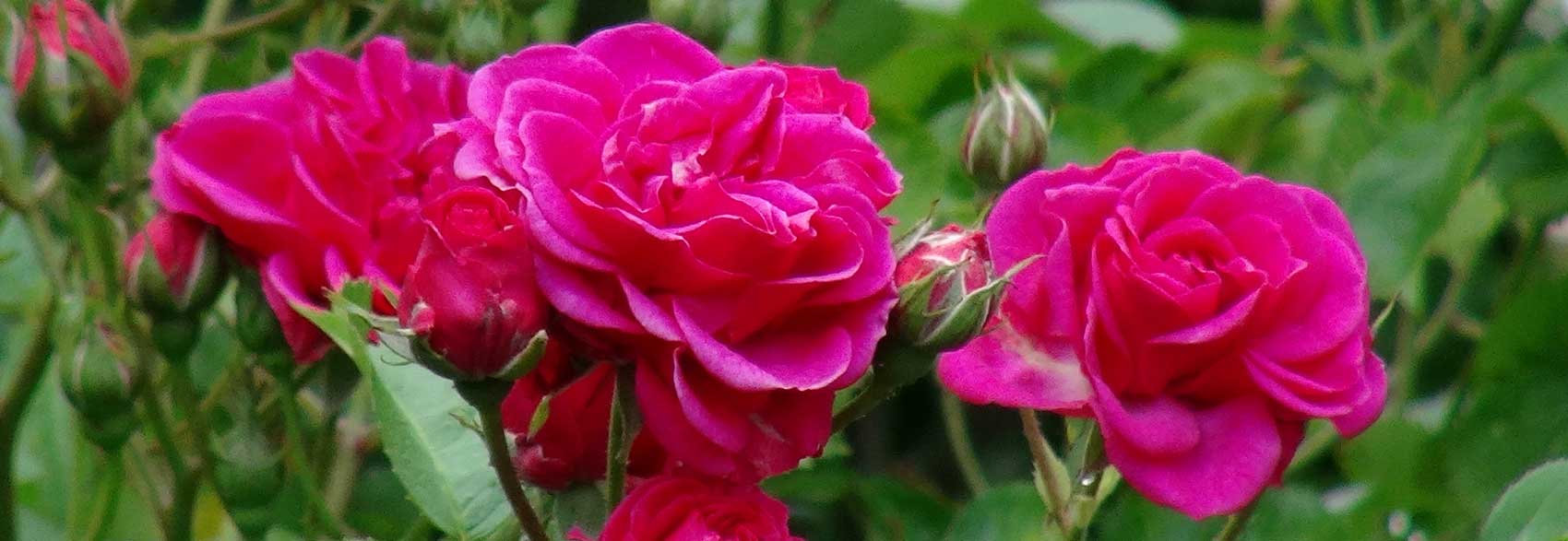 Rosa chinensis ‘Sophie’s Perpetual'
Rosa chinensis ‘Sophie’s Perpetual'Rosa chinensis was without doubt the most influential species introduced at this time as the British East India Company brought more examples back from their large rose gardens in Calcutta, populated originally from Chinese plant stocks.
Yet strangely enough they were referred to as the Bengal Rose (after their temporary staging post in Calcutta) though later became known as the China Rose.
Together with new species arriving in Europe from the Americas and more remote parts of Asia, new genetic features were introduced into rose breeding creating remarkable new plants with larger, more complex blooms, colours and fragrances.
But with those benefits came a few disadvantages like an increased susceptibility to disease and a need for more maintenance.
Roses were now changing from their often ungainly form to become neater and compact bushes, while the flowers commonly developed from simple open faces to complex and elegantly ruffled doubles.
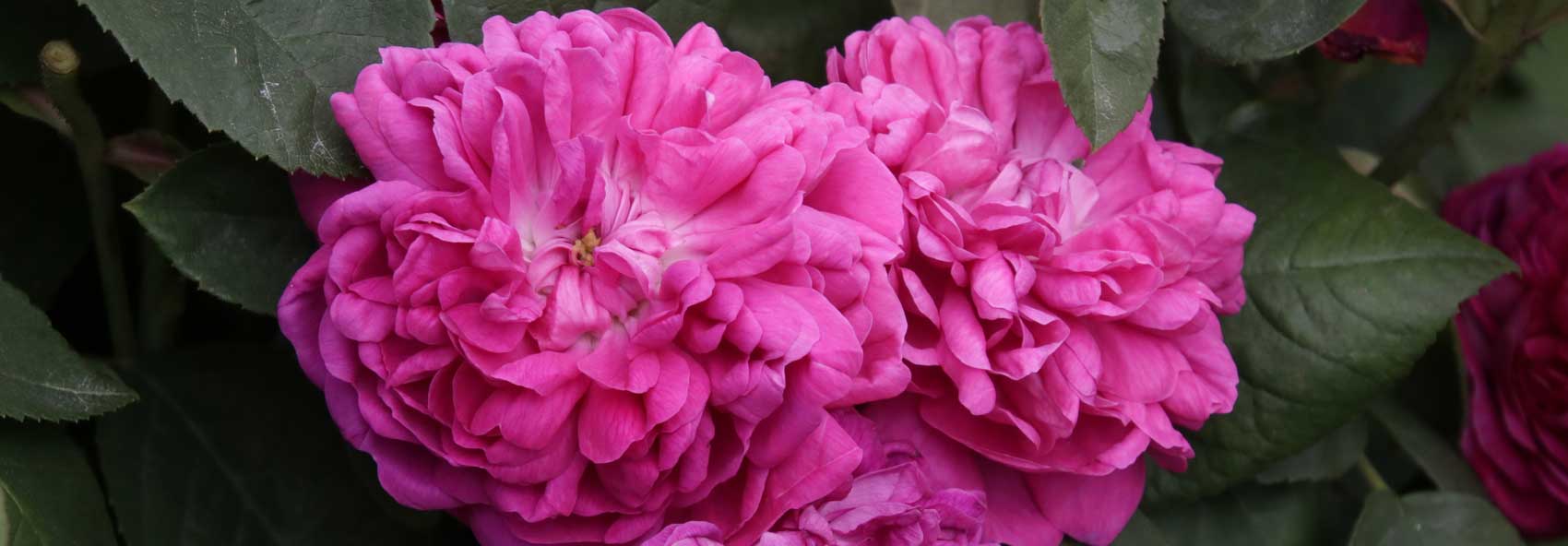 Rosa portlandia ‘Rose De Rescht’ - the Portland Rose
Rosa portlandia ‘Rose De Rescht’ - the Portland RoseThe Portland Rose was a particularly influential hybrid resulting from a cross between Rosa gallica, Rosa damascena and Rosa chinensis creating a sensation amongst garden enthusiasts at the time.
But perhaps the most influential individual was to be Napoleon’s wife, the Empress Josephine, who developed a passion for roses matched by unlimited resources to indulge in them. From her chateau at Malmasion near Paris, Josephine collected over 250 different specimens, aided by her husband’s military captains and her head gardener Andre Dupont.
Her fame grew to the point where the English, who were at war with the French at that time, allowed her consignments of roses for an English nursery to pass unhindered, such was their love and respect for the development of the ultimate bloom.
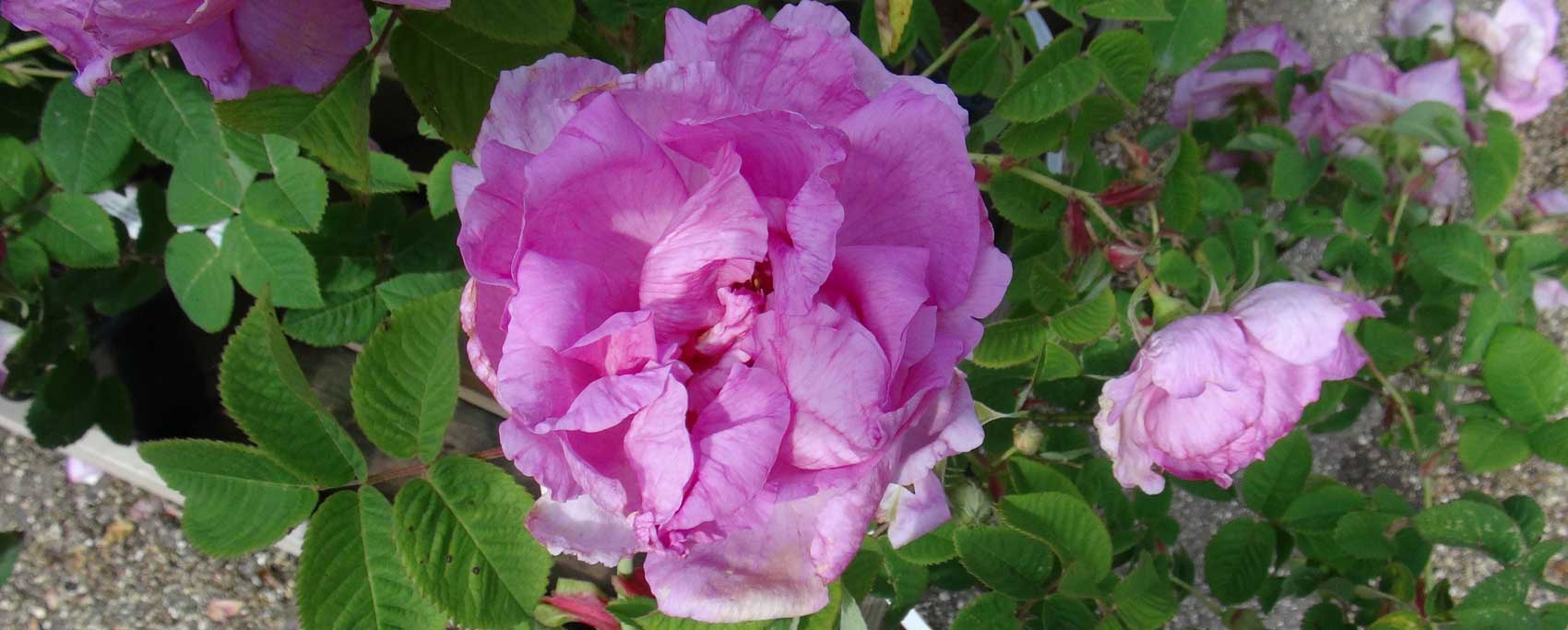 Rosa gallica ‘Empress Josephine’
Rosa gallica ‘Empress Josephine’By the early 19th century France became the world’s most prolific rose breeder, exporting around 5,000 varieties around the world, including to satisfy a particularly voracious appetite from the fast developing Eastern states of the USA.
# There are many different Old Garden Roses, the following being the most well known:-
• Alba: (x from Rosa canina and Rosa damascena) date back at least to the 2nd century AD in the Caucasus, being traded extensively by the Greeks and Romans. It became best known in Britain as the ‘White rose of York’ during the Wars of the Roses period.
They are mostly white flowered through to exquisite shades of pale pink that only bloom once in spring. The foliage is greyish green and flowers have a fragrance that is a mix of rose and citrus.
Examples include Rosa Alba ‘Maxima’ from 15th century and Rosa Alba ‘Celeste’ noted for its purity of pink.
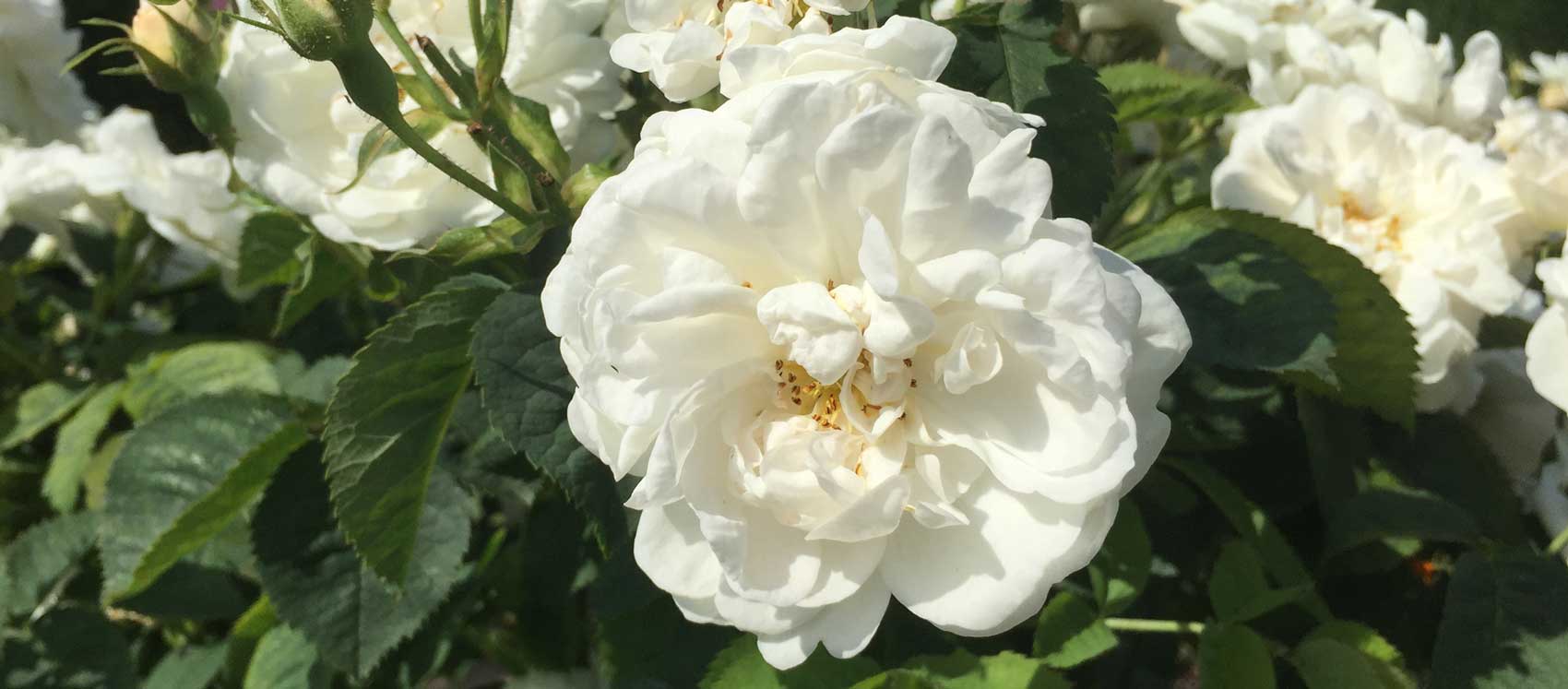 Rosa alba ‘Maxima’
Rosa alba ‘Maxima’• Bourbon: (x Rosa chinensis and a Damask Perpetual rose) This rose was a natural hybrid from two roses being used as hedging on the Isle of Bourbon, now Renuion.
The French East India Company brought cuttings back to France where it was subsequently introduced across Europe.
The flowers are very fragrant, ruffled double form and were one of the first to produce more than one flush of blooms per season. Examples include ‘Souvenir de Malmaison’, ‘Venus’ and ‘Ferdinand Pichard’ which features red/pink stripes.
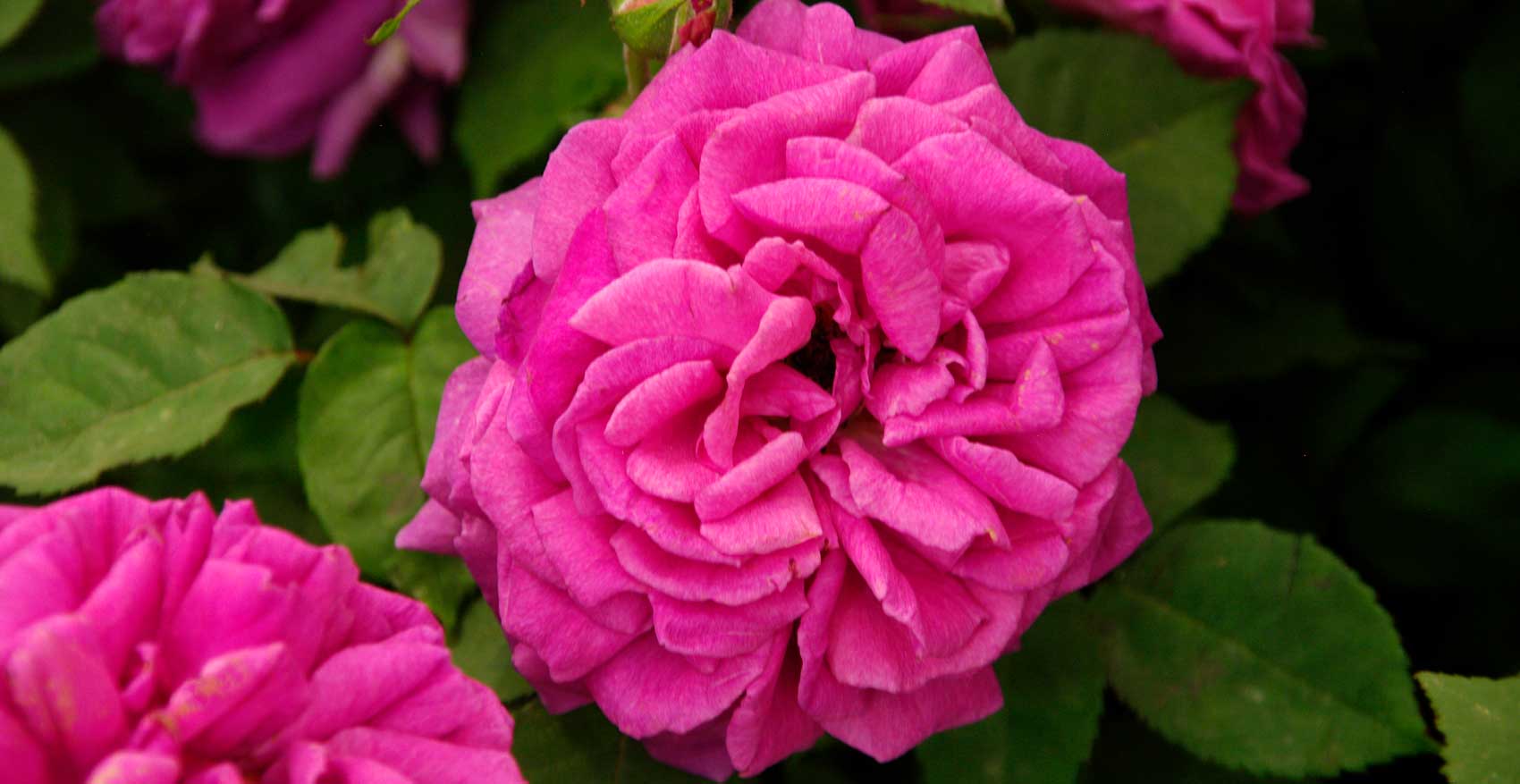 Rosa bourbon ‘Madame Isaac Periere’
Rosa bourbon ‘Madame Isaac Periere’• Centifolia: Known as the Cabbage Rose or Provence Rose, grows to two metres in height and produces masses of wonderful globe shaped double flowers in white, pink and deep rose once per season.
It is a cross between Rosa gallica, R. moschata, R. canina, and R. damascena and continues to be cultivated commercially today for its particular fragrance which is prized by the French perfume industry.
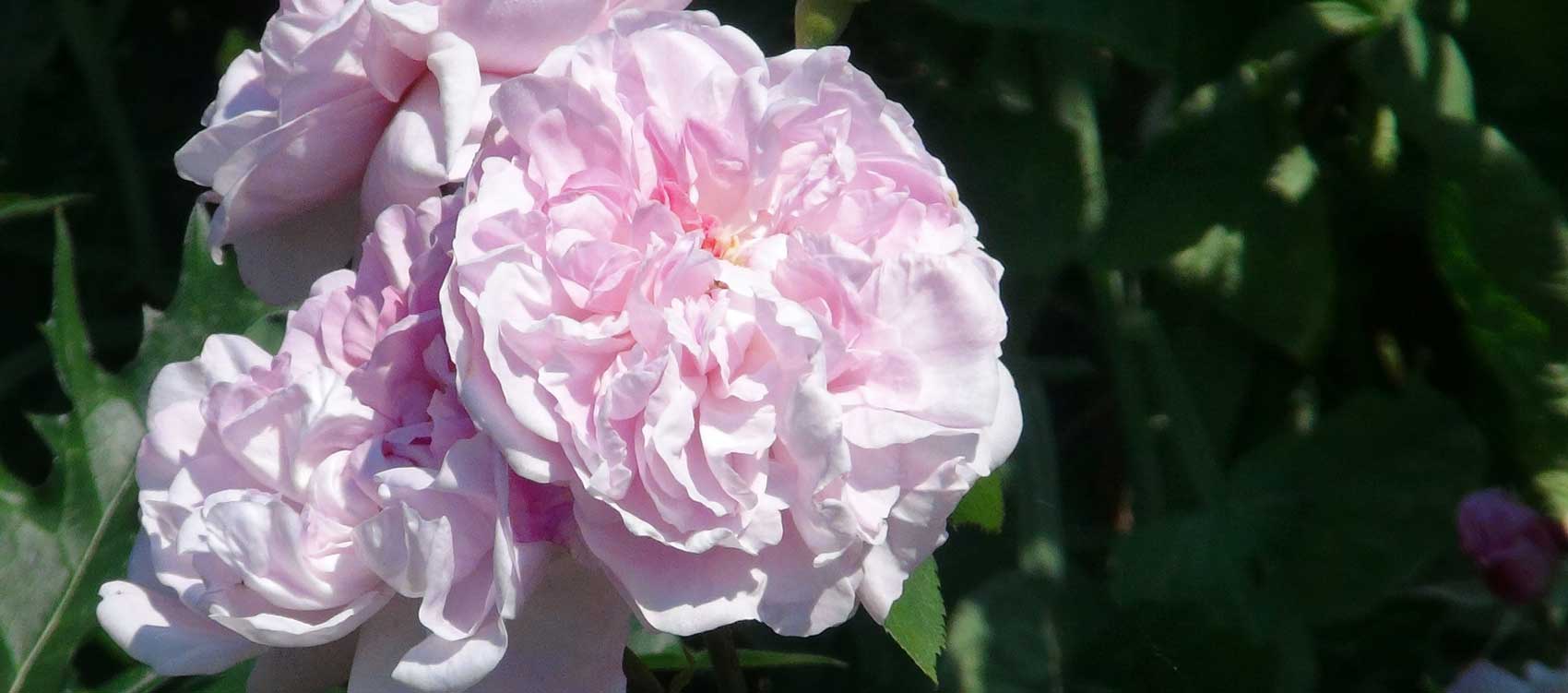 Rosa centifolia ‘Fantin Latour’
Rosa centifolia ‘Fantin Latour’• Complicata: Believed to be a cross between Rosa canina and Rosa gallica, it has flowers about 120mm across, of radiant rose-pink with a prominent centre of stamens.
It is very robust, reliable and floriferous and can also be grown as a climber.
Rosa Complicata is one of the most attractive single roses and certainly one of the best shrub roses for garden cultivation.
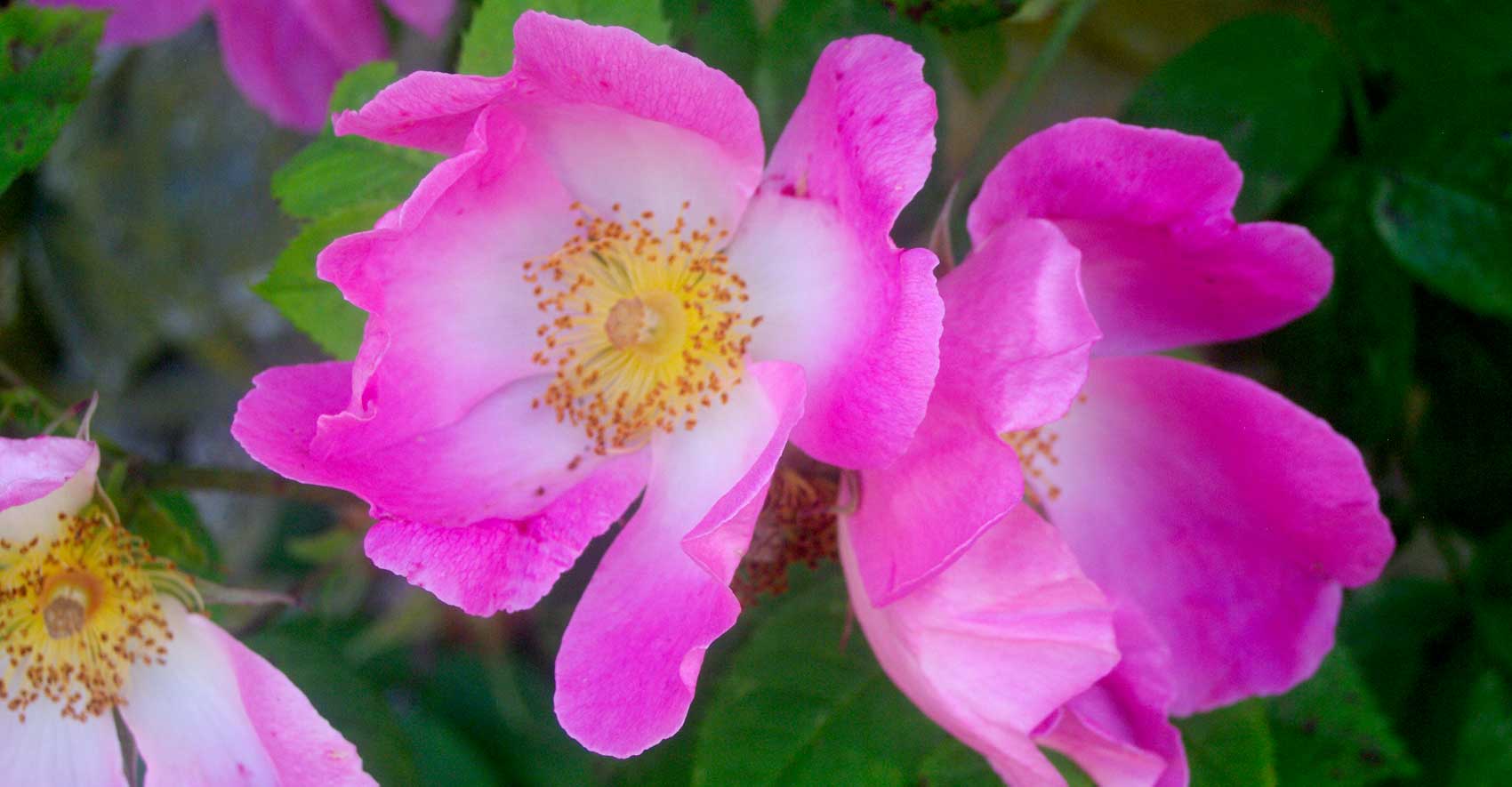 Rosa complicata
Rosa complicata• Damask: Rosa damascena is a cross between Rosa gallica and Rosa moschate and is considered an important step in the historical hybrid lineage of the rose. They first appeared around 900BC and were brought to Europe from the middle east in the late 13th century.
The flowers are intensely fragrant, fairly small but delightfully double and come in shades of white, pink or red.
It is cultivated for the perfume industries in the middle east and is also used for culinary purposes especially in ice creams, jams, marzipan and Turkish Delight. Rosa damascena is named after the city of Damascus in Syria.
Examples include Rosa damascena semperflorens or the Four Season Rose, ‘Blush Damask’, ‘Duc de Cambridge’, 'Ville de Bruxelles' and ‘Isaphan’.
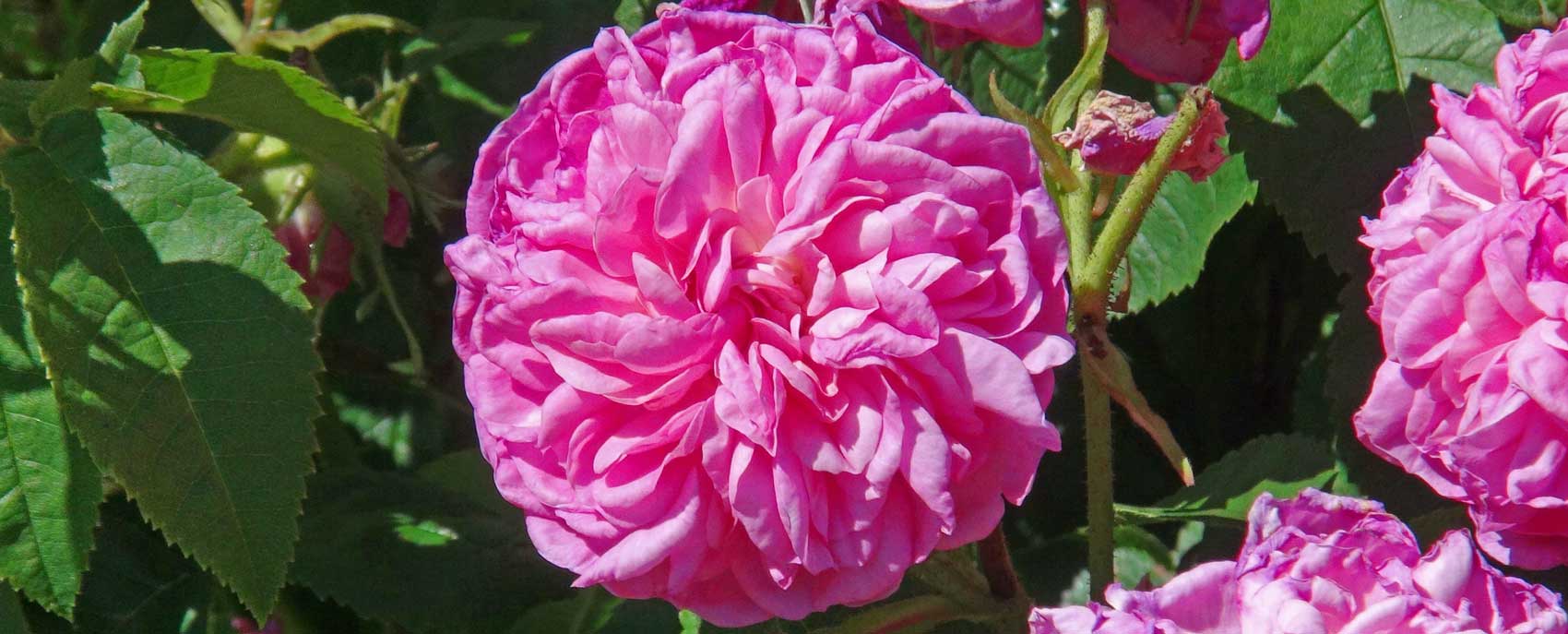 Rosa damascena ‘La Ville De Bruxelles’
Rosa damascena ‘La Ville De Bruxelles’• Hybrid China: Rosa chinensis hybrids are one of the most important in the history of the modern rose albeit that many in the group are from spontaneous cross pollination.
When the East India company brought samples back from China via Calcutta in the late 1700s they added double flower forms, reliable repeat flowering, new fragrances and high centred, unfurling shapes to the gene pool, revolutionising rose breeding across Europe in the process.
China roses are a complex group of natural crosses and man made hybrids with Rosa chinensis mutabilis being one of the most popular. All produced flowers of many different hues and forms and further set themselves apart with blooms that darkened in colour over time. Up until the arrival of the China Rose, all rose blooms had had a tendency to fade over time.
Examples include ‘Triomphe de Laffay’ and 'Comtesse du Cayla' raised by Pierre Guillot in 1902.
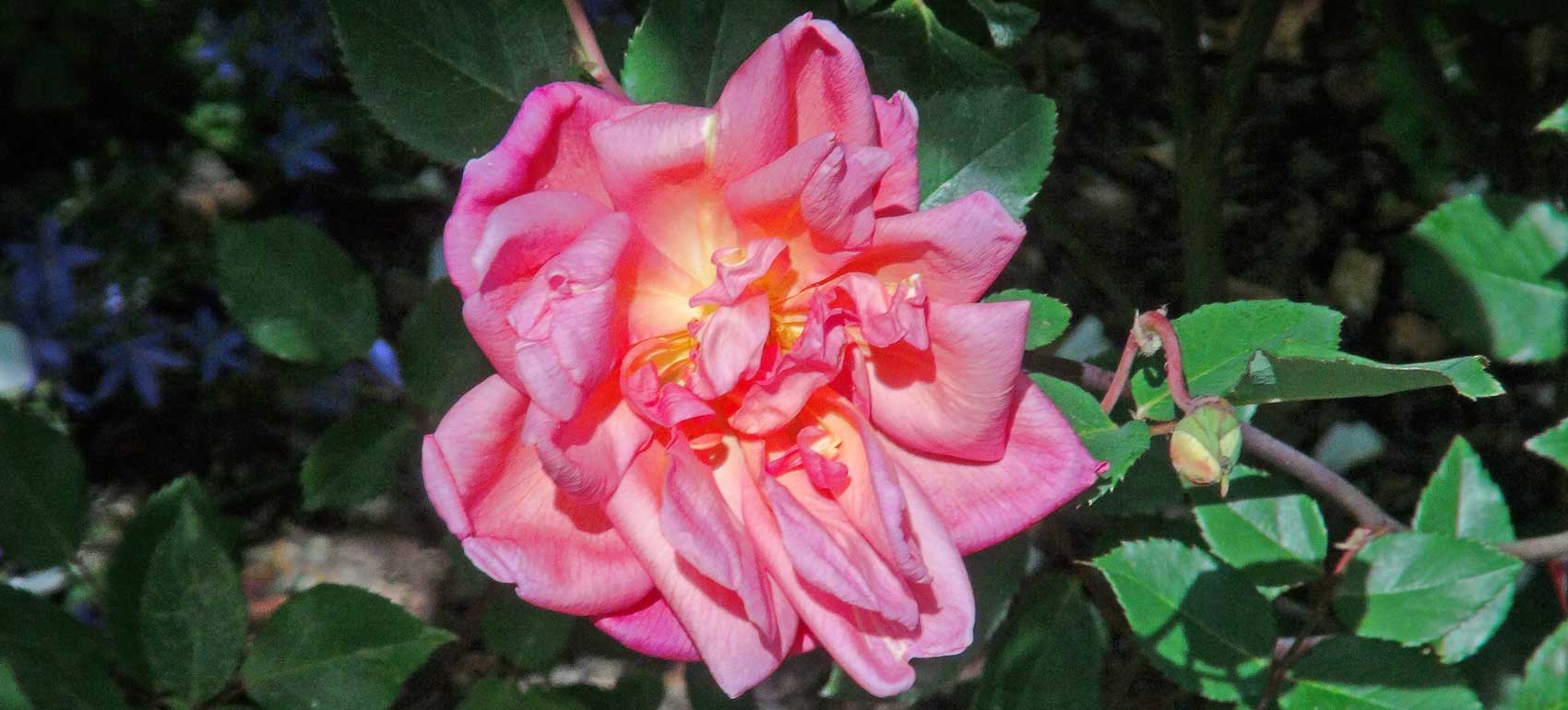 Rosa chinensis ‘Comtesse Du Cayla’
Rosa chinensis ‘Comtesse Du Cayla’• Hybrid Gallica: Apart from the wild Rosa gallica, the other contributors to this hybrid group are generally unknown, but nevertheless it played an important part in 19th century gardening and the genes have continued to be used in many modern roses.
These roses are almost always thornless and form low shrubs of just over a metre high. The once-flowering semi-double blooms are usually pink, red, or purple and have a strong rose fragrance.
Rosa gallica officinalis is the most famous being first noted around the 14th century. It was originally grown for its medicinal qualities, hence the name ‘Apothecary’s Rose’. It is also believed to be the ‘Red Rose of Lancaster’, the emblem chosen by the House of Lancaster at the time of the War of the Roses in England.
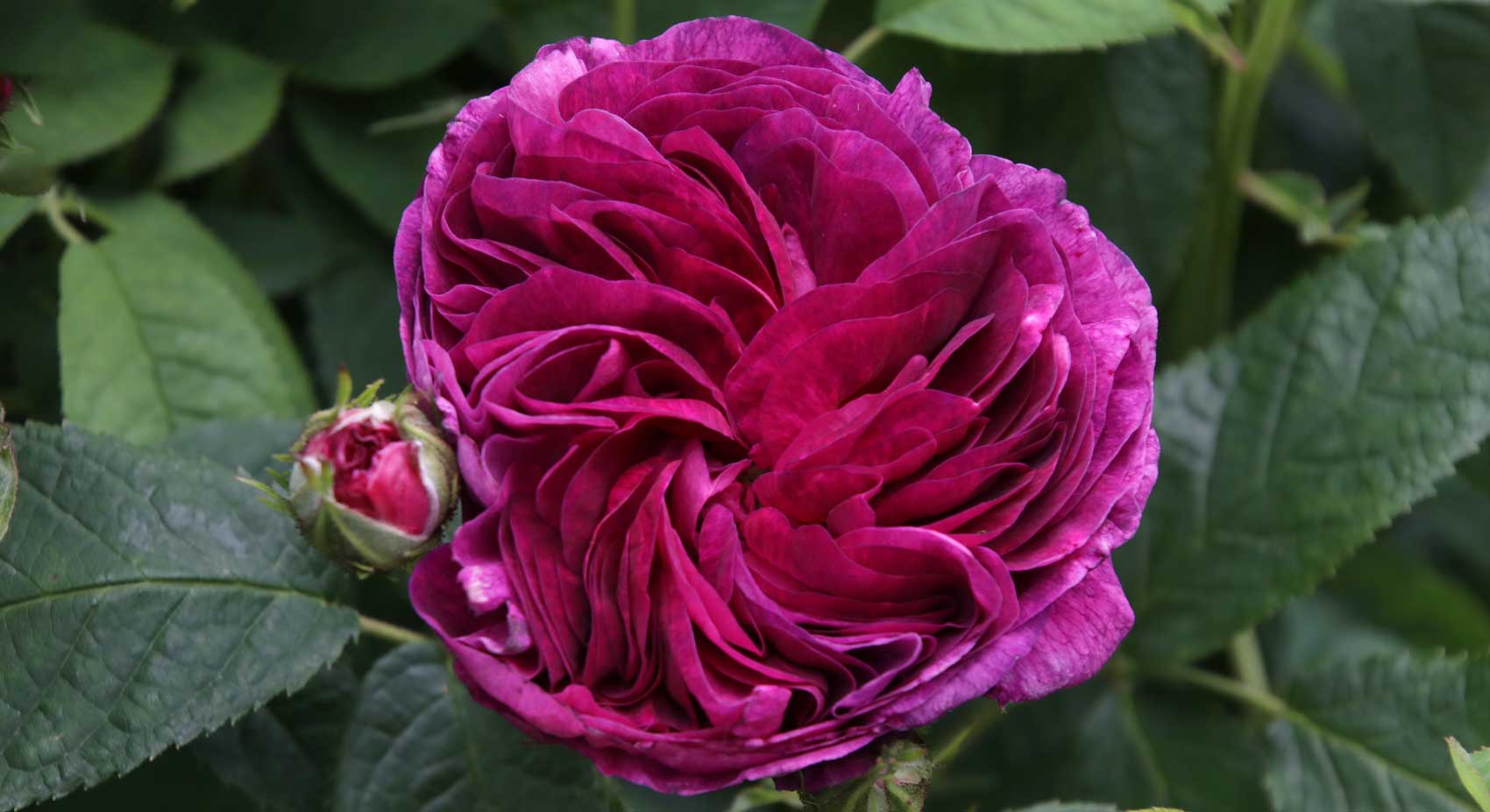 Rosa gallica ‘Charles de Mills’
Rosa gallica ‘Charles de Mills’• Hybrid Perpetual: A mix of so many Old Garden roses, the parentage is difficult to specify but the key feature that made them so much in demand was their ability to re-bloom (remontancy) – albeit not that reliably. This feature came from the China roses that had started to appear in Europe in the early 19th century.
The only other re-bloomers were Tea Roses but they didn’t like cooler climates, so Perpetuals were very popular in England and Northern Europe and also featured in the emerging phenomenon of competitive flower exhibitions.
They can be cumbersome in smaller gardens but are distinguished by their very large, fragrant pink or red double blooms. Examples include ‘La Reine’, 'Souvenir de Docteur Jamain' and ‘Baroness Rothschild’.
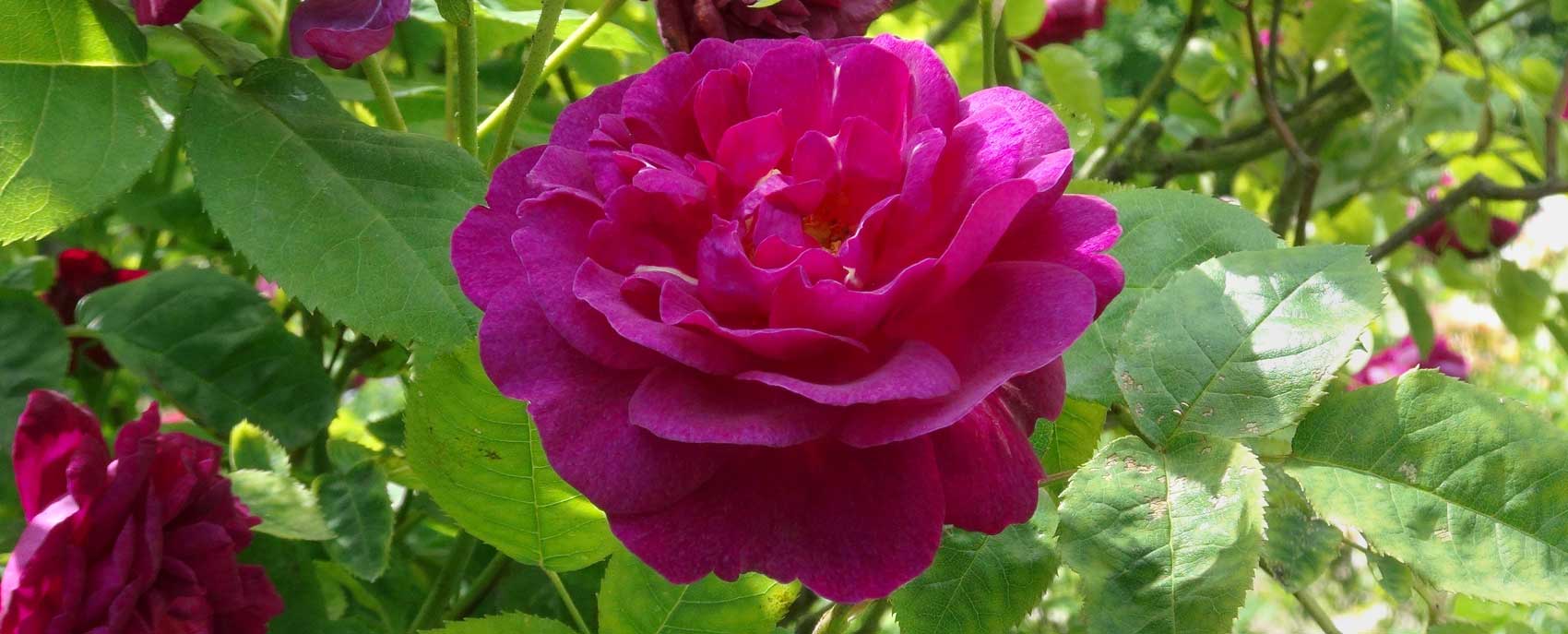 Rosa Hybrid Perpetual ‘Souvenir de Docteur Jamain’
Rosa Hybrid Perpetual ‘Souvenir de Docteur Jamain’• Moss: These roses are a genetic mutation of Rosa Centifolia, growing to about 1.5 metres and are generally once-blooming and very fragrant.
As per Rosa Centifolia, Moss Roses are very full and often quartered e.g. the bowl shaped bloom appears to be divided into four equal parts.
They are unique, however, in that they produce a sort of sticky moss-like growth on their flower stems and buds which has a balsam or pine scent to it.
They were very popular in the late nineteenth century but other re-blooming hybrids have largely eclipsed them today. Examples include ‘Old Red Moss’, ‘Salet’, ‘Chapeau de Napoleon’ and ‘James Mitchell’.
 Rosa Moss ‘William Lobb’
Rosa Moss ‘William Lobb’• Noisette: Classed as the only Old Garden rose originating in the USA, it was bred by John Champneys from South Carolina from Rosa moschate and a China rose, but he did not publicise it much and it took an employee by the name of Noisette to send some seeds back to France where it was greeted with great enthusiasm.
Champneys agreed to name it after the man who brought it to public attention.
They are generally climbers that have clusters of fragrant flowers that tend to hang down due to their weight.
These roses are cold-tender and best suited for warmer climates but are good at repeat blooming and are quite disease resistant. Examples include ‘Blush Noisette’, ‘Celine Forestier’ and ‘Marechal Niel’ a Tea-Noisette cross.
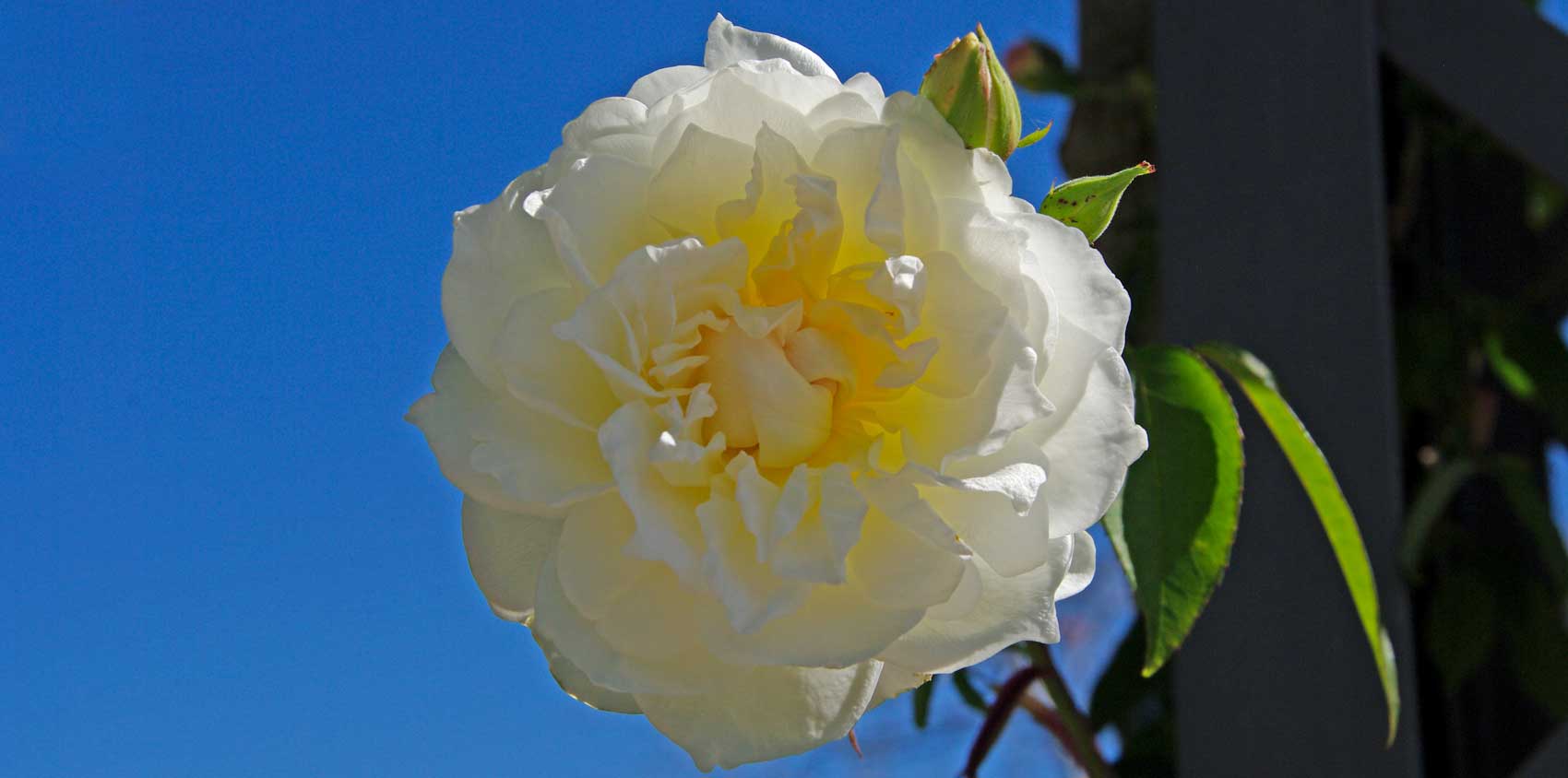 Rosa Noisette ‘Lamarque’
Rosa Noisette ‘Lamarque’• Portland: it is thought to have all been bred from one original hybrid which was a cross between autumn damask and gallica originally called Rosa paestana or Scarlet Four Seasons Rose.
Today it is known as the Portland Rose, after the Duchess of Portland to whom it was first gifted.
Blooms are very fragrant, usually pink and are repeat- flowering – a rarity at that time (1780’s).
They are low growing with short flowering stalks and examples include ‘James Veitch’, ‘Rose du Roi’ – an outstanding red Portland and ‘Comte de Chambord’ a very fragrant pink rose.
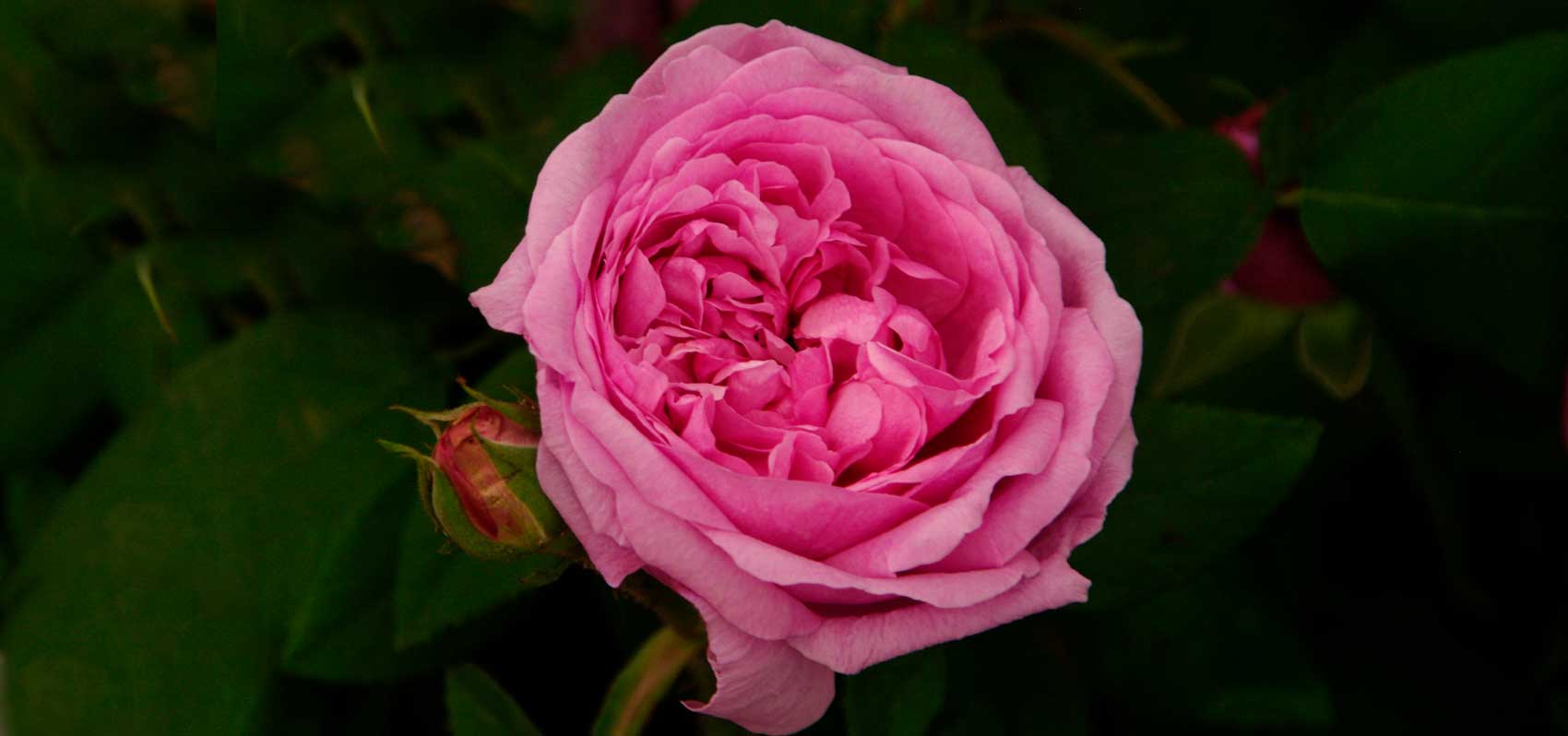 Rosa Portland ‘Comte De Chambord’
Rosa Portland ‘Comte De Chambord’• Tea: Rosa x odorata or the Tea Rose is a cross between R. chinensis and R. gigantea. They were a big hit in southern Europe where they thrived in the warm dry climate and offered reliable repeat flowering for the first time.
But the feature that excited the market the most was the unique high centred blooms which unfurled to open. This new, delicately beautiful shape captured imaginations and breeders set about adding other features like sweeter perfumes to counter the slightly musty ‘tea’ scent of the first arrivals.
One of the parents - Rosa gigantea – added yellow blooms into the gene pool and further cross breeding produced apricots, salmons, and new shades of pink previously unseen. Examples include ‘Lady Hillingdon’, ‘Archduc Joseph’, ‘Mrs Foley Hobs’.
 Rosa odorata ‘Pallida’
Rosa odorata ‘Pallida’Lesser known Old Garden Roses include Ayreshire, Boursault (purple to red fragrant blooms) and Elegantine (with foliage that is scented of green Apples) amongst others.
Roses part #3 - Modern Roses - click here.